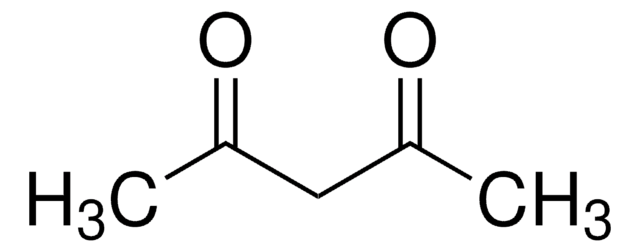21409
Decanoic acid
analytical standard
Synonym(s):
1-Nonanecarboxylic acid, Acid C10, C10:0, Capric acid, NSC 5025
About This Item
Recommended Products
biological source
plant
Quality Level
grade
analytical standard
vapor pressure
15 mmHg ( 160 °C)
assay
≥99.5% (GC)
shelf life
limited shelf life, expiry date on the label
technique(s)
HPLC: suitable
gas chromatography (GC): suitable
bp
268-270 °C (lit.)
mp
27-32 °C (lit.)
density
0.893 g/mL at 25 °C (lit.)
application(s)
cleaning products
cosmetics
flavors and fragrances
food and beverages
personal care
format
neat
functional group
carboxylic acid
SMILES string
CCCCCCCCCC(O)=O
InChI
1S/C10H20O2/c1-2-3-4-5-6-7-8-9-10(11)12/h2-9H2,1H3,(H,11,12)
InChI key
GHVNFZFCNZKVNT-UHFFFAOYSA-N
Looking for similar products? Visit Product Comparison Guide
Related Categories
General description
Application
- Decanoic acid (DA) may be used as an analytical standard for the determination of the analyte in tobacco by coupling needle-based derivatization headspace liquid-phase microextraction with gas chromatography-mass spectrometry (HS-LPME/GC-MS).
- Decanoic acid (DA) may also be used as a reference standard for the determination of the analyte (DA) in water samples by a method based on continuous solid-phase extraction and gas chromatography–mass spectrometry (GC–MS).
Other Notes
The collision cross section (CCS) measurement was provided by Waters Corporation, using the SYNAPT XS mass spectrometer.
For a description and overview of how ion mobility enables the measurement of the CCS of an ion visit ims.waters.com.
Further information on the SYNAPT XS mass spectrometer can be found on the IMS microsite and product webpage.
TWCCS measurements are expected to be within 2% of this reference value.
P/N 21409 is part of the Waters Extractables & Leachables UNIFI scientific library which can be downloaded from Waters Marketplace.
Recommended products
signalword
Warning
hcodes
Hazard Classifications
Aquatic Chronic 3 - Eye Irrit. 2 - Skin Irrit. 2
Storage Class
11 - Combustible Solids
wgk_germany
WGK 1
flash_point_f
296.6 °F - closed cup
flash_point_c
147 °C - closed cup
ppe
dust mask type N95 (US), Eyeshields, Gloves
Choose from one of the most recent versions:
Already Own This Product?
Find documentation for the products that you have recently purchased in the Document Library.
Customers Also Viewed
Protocols
In this study, SPME was used for the analysis of free fatty acids in Parmesan cheese using a 65 μm Carbowax/divinylbenzene (DVB) SPME fiber. Headspace extraction of the cheese sample was conducted at 65 °C for 15 minutes and analyzed by GC with FID detection. SPME is ideal for analyzing the volatiles associated with solid food samples. The phase chemistry of the Nukol GC column provides excellent peak shape of acidic compounds.
Our team of scientists has experience in all areas of research including Life Science, Material Science, Chemical Synthesis, Chromatography, Analytical and many others.
Contact Technical Service








